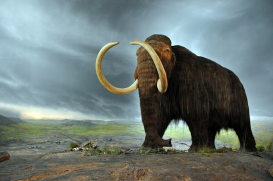"Climate" defies easy definition. It is a malleable concept, one that historians have increasingly recognized is mediated by diverse cultural practices. The project, Science as Prophecy, examines how various scientific cultures turned natural archives into comprehensive knowledge about climate. These archives comprise material traces that indirectly track the climates of the past, such as sloth dung, packrat middens, fossil pollen, tree rings, algae, and air bubbles in ice. Together, these traces are known as “proxies.”
At the MPIWG, Charenko is exploring two proxies that scientists developed in the second half of the twentieth century: sloth dung and packrat middens (the urine-soaked piles of vegetation packrats build as nests). The scientists who developed techniques to interpret these material remains hoped to find answers to questions about climate in unglaciated regions, regions which lacked other organic proxies with which to reconstruct the past. These regions were important for understanding human antiquity, migration, and animal extinction, given that they contain significant paleontological and archeological evidence, evidence which was difficult to interpret without new proxies. The project explores how the new proxy evidence gained authority, how the inferences made from these proxies changed perceptions of climate and the human, and how they fit in to broader discussions about culpability for environmental degradation.

